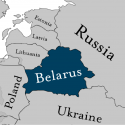Russian Offensive Campaign Assessment, January 11, 2024
Jan 11, 2024 - ISW Press
The reported concentration of the Russian military’s entire combat-capable ground force in Ukraine and ongoing Russian force generation efforts appear to allow Russian forces to conduct routine operational level rotations in Ukraine. Ukrainian Main Military Intelligence Directorate (GUR) Deputy Chief Major General Vadym Skibitskyi stated on January 11 that Russian forces have 462,000 personnel in Ukraine and that this represents the entire land component of the Russian military. Skibitskyi stated that most Russian units in Ukraine are manned at between 92 and 95 percent of their intended end strength and that the size of the Russian grouping in Ukraine allows Russian forces to conduct rotations throughout the theater. Skibitskyi stated that Russian forces withdraw units that are at 50 percent or less of their intended end strength to rear areas and return them to the front following recovery and replenishment. Russian Security Council Deputy Chairperson Dmitry Medvedev stated on January 11 that the Russian military has successfully replenished Russian forces in Ukraine through an ongoing crypto-mobilization effort that generated over 500,000 new personnel in 2023.









